DAKS, a prestigious British luxury fashion house, was founded in 1894 by Simeon Simpson in London. Renowned for its commitment to quality and innovation, DAKS quickly established itself as a leading name in bespoke tailoring. Simpson, starting his journey at the tender age of 16, rented a small room in East London with the vision of revolutionizing ready-to-wear fashion. By integrating new technologies like machinery for buttonholes and electric saws for cutting fabric, he was able to maintain high standards of craftsmanship while increasing production efficiency. This pioneering approach laid the foundation for the brand’s enduring success and popularity.
As the business expanded, Alexander Simpson, Simeon’s son, took on a more significant role, further propelling the company’s growth. In 1935, DAKS introduced the first self-supporting trousers, a revolutionary design that offered unmatched comfort and mobility. This innovation not only broadened DAKS’ appeal but also cemented its reputation in the world of sportswear, providing attire for tennis, golf, and even the British Olympic team. During World War II, DAKS’ commitment to quality was further demonstrated when the brand was commissioned to produce military uniforms, manufacturing millions of garments despite the challenges posed by wartime disruptions.
The legacy of DAKS extends beyond its product innovations to its iconic retail presence, notably Simpsons of Piccadilly, established by Alexander Simpson. The store, opened in 1936, was a marvel of modern retail architecture and design, featuring the world’s largest curved glass display windows at the time. Despite Alexander’s untimely death, the store continued to thrive, becoming a landmark in London. DAKS’ commitment to excellence and innovation has been recognized with royal warrants from three members of the Royal Family, underscoring its status as a symbol of British sartorial elegance. Today, under the ownership of the Japanese group Sankyo Seiko, DAKS continues to blend its rich heritage with contemporary fashion, maintaining its position as a hallmark of quality and style.
AW13 Daks Fashion Show
How to tell if Daks is vintage from the logo
Daks is a brand that has maintained a consistent and recognizable logo throughout its history, reflecting its rich heritage and commitment to quality. The logo has evolved subtly over time, but key elements have remained constant, making it possible to determine the era of a Daks item by examining its logo.
1895 to now Daks logo
- The logo prominently features the word “DAKS” in a bold, sans-serif font.
- The letters are spaced evenly, with the “D” and “S” having a distinct, elongated design.
- Below the main text, “LONDON” is written in a smaller, simpler font, emphasizing the brand’s origin.
- The overall design is minimalistic and modern, reflecting the brand’s long-standing heritage and contemporary appeal.

1895 to now DAKS logo
How to tell if Daks is vintage from the tags
Daks, a renowned British fashion house, has a rich history reflected in its clothing tags. Over the decades, the brand’s tags have evolved, showcasing different styles and manufacturing details. Here’s how to identify the era of vintage Daks clothing by examining the tags.
If you can’t see your tags, head to our vintage label identification page. We’ll help you identify those vintage labels!
1940s vintage Daks tags
- Simple, utilitarian design reflecting wartime austerity.
- Basic fonts with minimal decoration.
- Often includes “Made in England” or similar text.
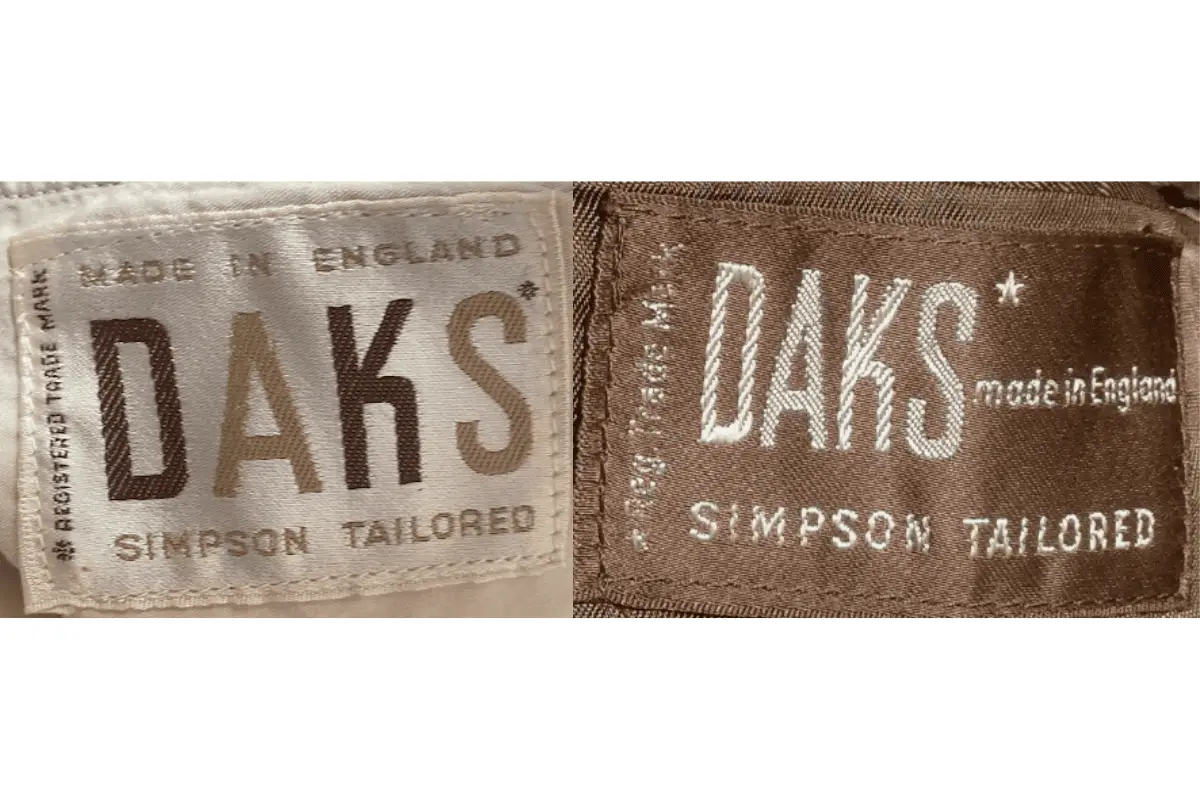
1940s Daks tags
1950s vintage Daks tags
- More detailed and decorative compared to the 1940s.
- Introduction of bolder fonts and colors.
- Often includes “Simpson Tailored” as a descriptor.
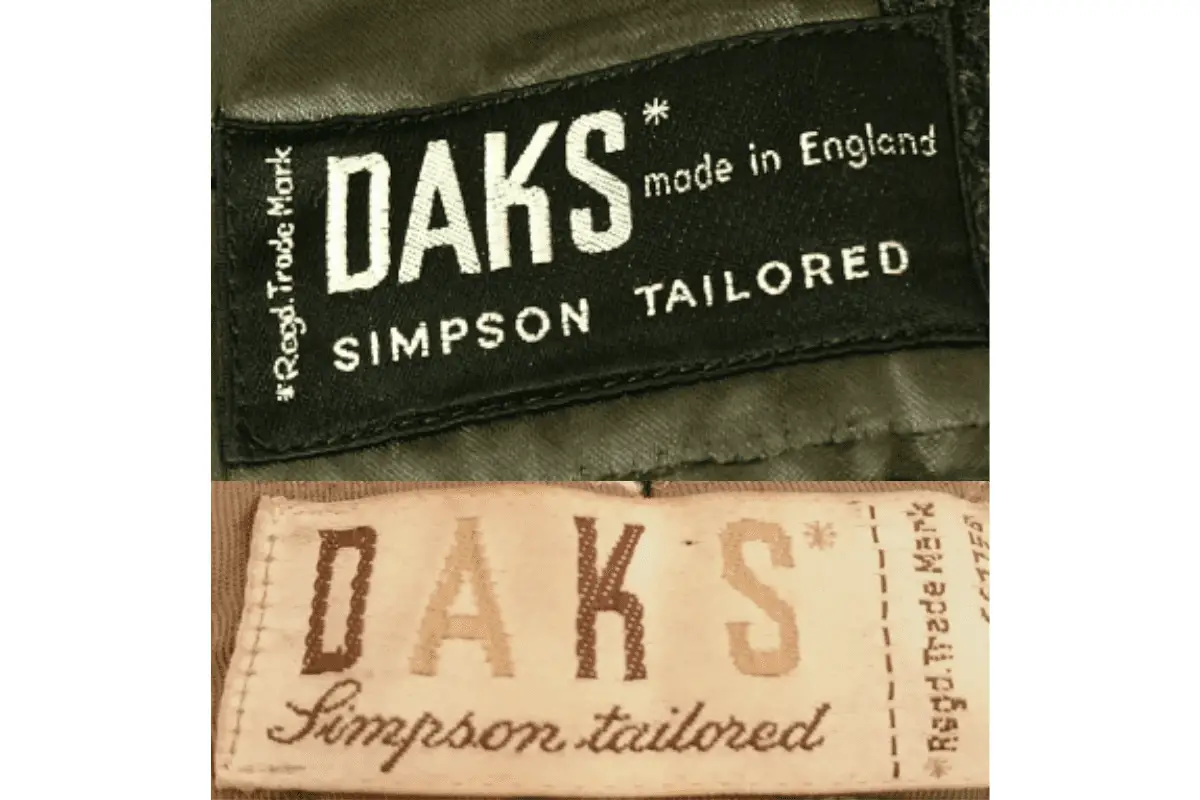
1950s Daks tags
1960s vintage Daks tags
- Modernized fonts reflecting the era’s design trends.
- Use of tags that highlight fabric composition.
- Some tags include the iconic “Daks” logo in bold letters.
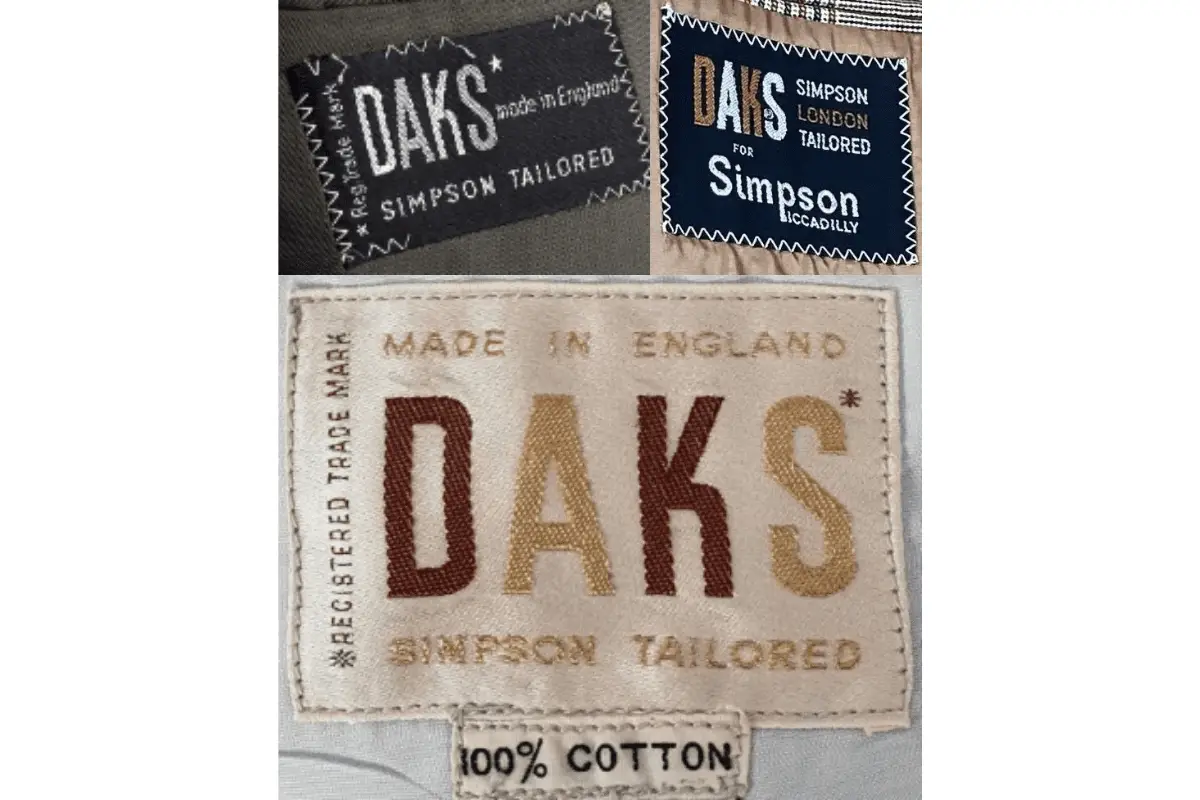
1960s Daks tags
1970s vintage Daks tags
- Introduction of vibrant colors and more intricate designs.
- Tags often feature detailed stitching and fabric blends.
- Includes descriptors like “London New York” to emphasize international presence.
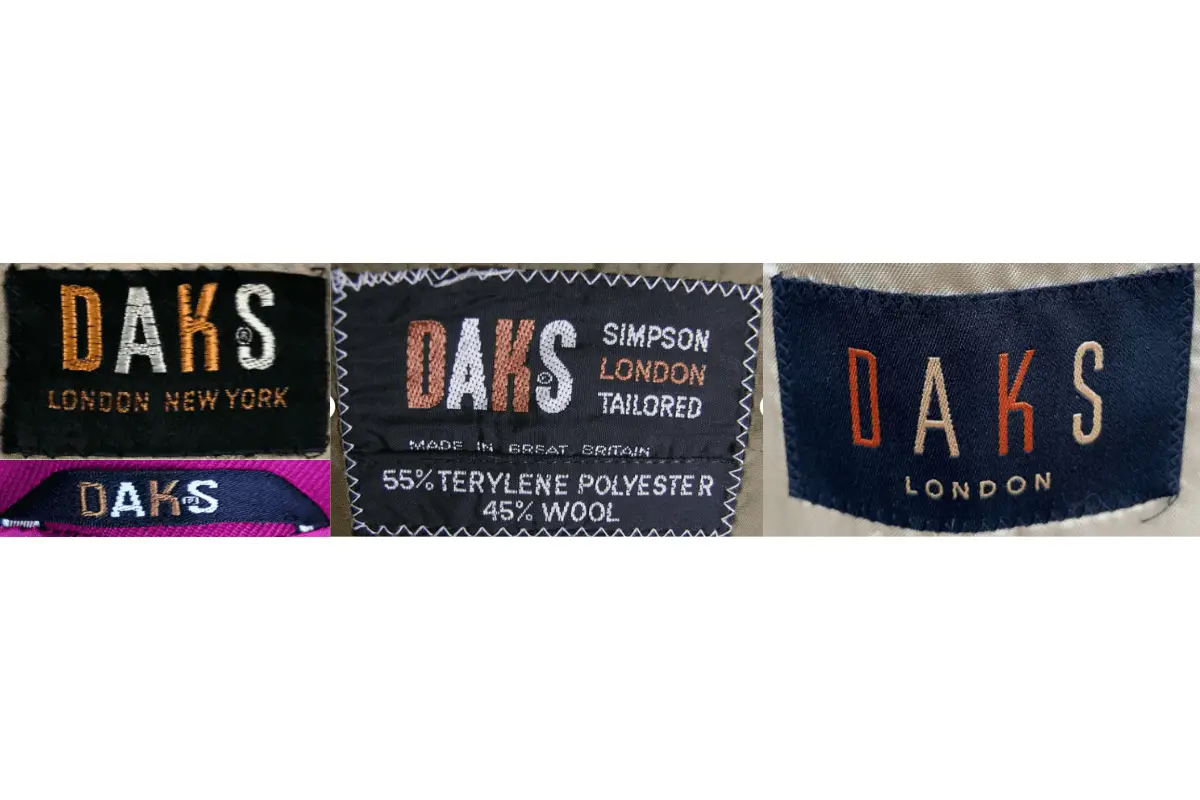
1970s Daks tags
1980s vintage Daks tags
- Bold and colorful designs reflecting the fashion of the era.
- Use of mixed materials like wool and polyester blends.
- Prominent “Simpson London Tailored” text.
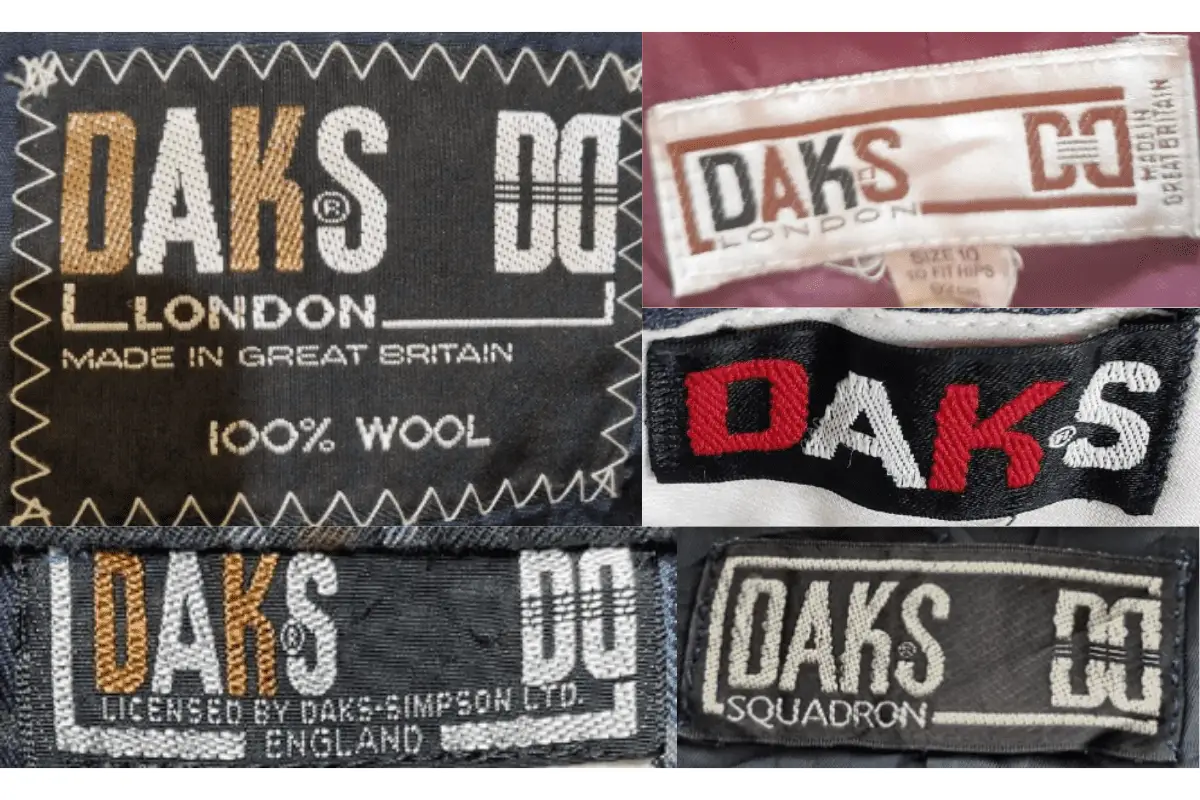
1980s Daks tags
1990s vintage Daks tags
- Return to more minimalist and sleek designs.
- Focus on high-quality materials with clear fabric composition.
- Tags often feature simple fonts and logos.
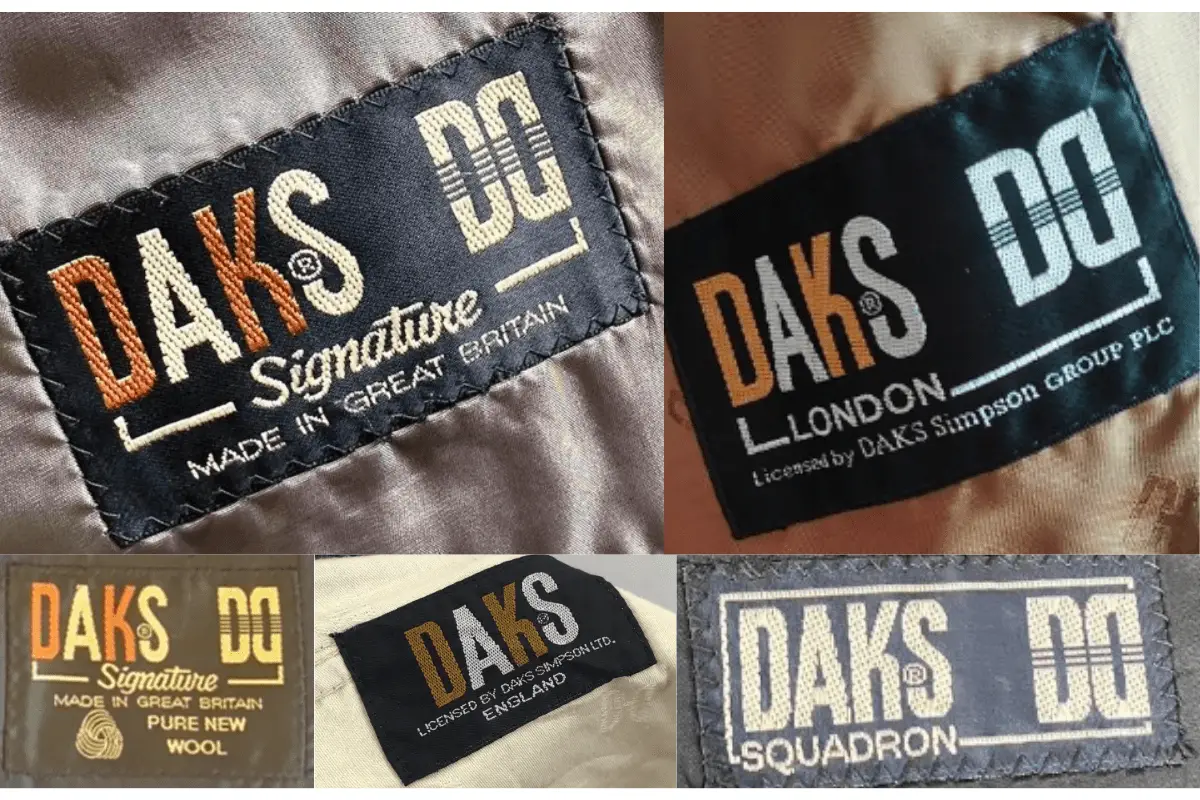
1990s Daks tags
2000s vintage Daks tags
- Modernized look with a blend of classic and contemporary elements.
- Introduction of loop tags for added durability.
- Bold fonts paired with clear, clean designs.
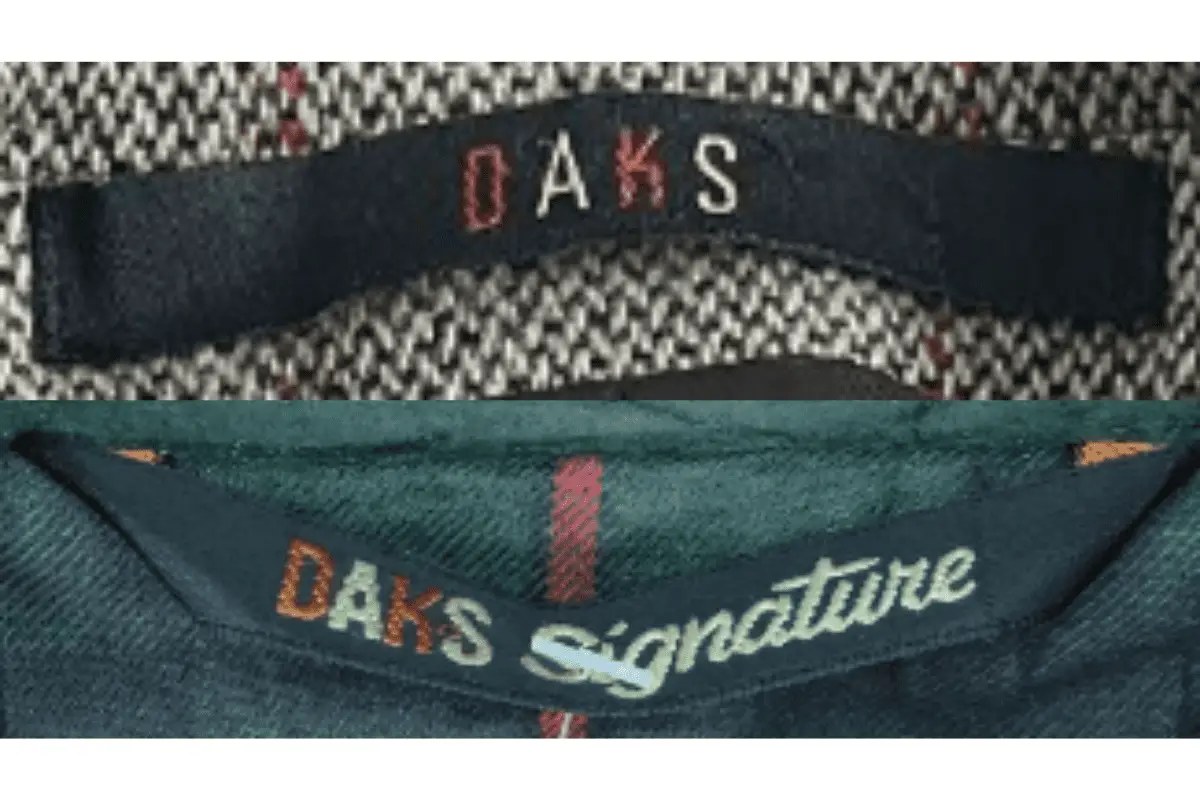
2000s Daks tags


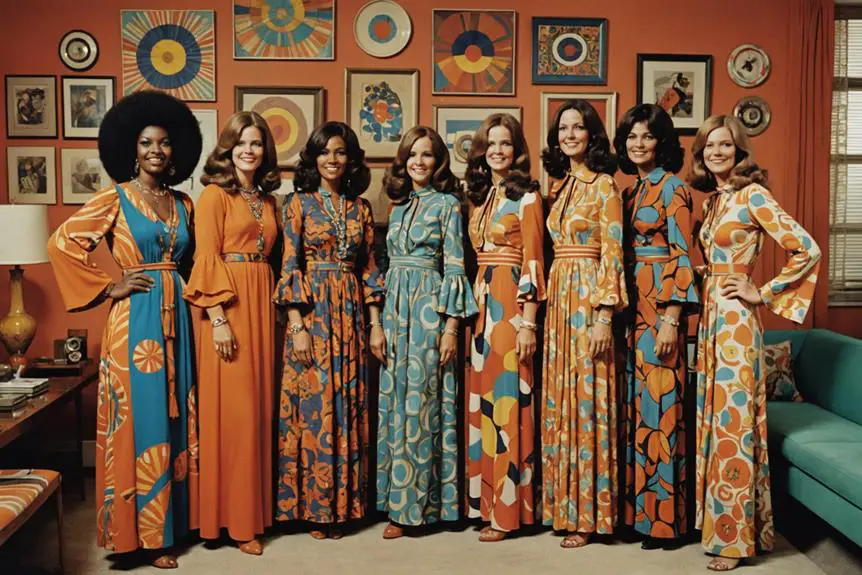


Just wanted to say thank you for this! Just grabbed a suit and wasn’t sure of the age. Seems I got a late 40s/ early 50s suit for £25. Happy day 🙂